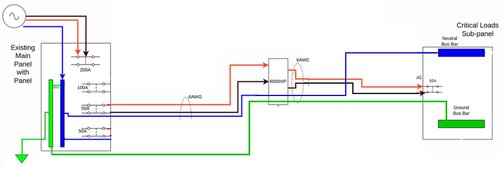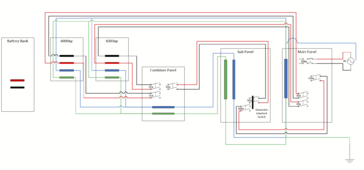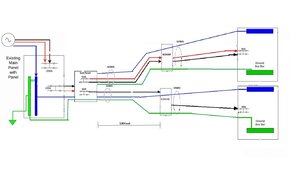So, yours will be exactly the same only totally different. ?
Like this?
View attachment 185755
No... You do not need to do anything with the N-G bond. Just make sure thedynamic bondbond relay in the 6000XP is disabled.
Notice that on the 6000XP, there is no disconnect of the neutral (or ground). That is I drew them as passing straight through the inverter. Consequently, the Neutral and Ground at the critical load panel are 'bonded' by the main bonding jumper at the Main panel.
Yep that looks right. Just passing through the neutral and ground all the way to the CL panel. 6000XP set to disable the N-G bond. In this instance if I’m moving over my office circuits… can I just move the hots or do the neutrals need to go too? Using Wago connectors to extend the wires to the CL panel.






